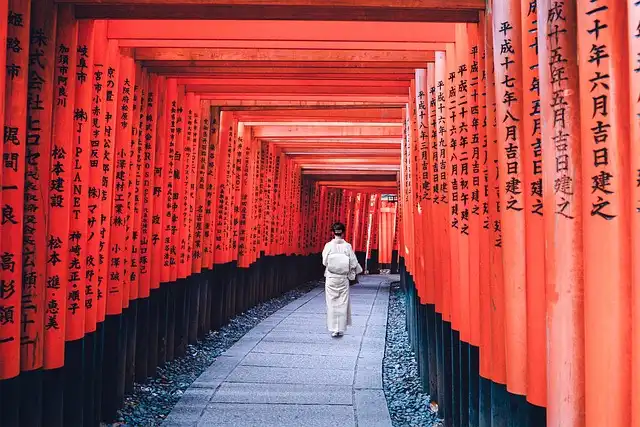Bosozoku Vs Kaido Racer: A History of Japan’s Wildest-Looking Subcultures

Up and down the coast from BC to SoCal, local clubs come together at summer and New Year's touring cruises, as well as events like the Nonsuri, a slang word that combines the Japanese for welded differential and festival.
This bike, developed by Mitsuaki “Aki” Shinohara, is a tribute to this social sensation with long echoes. Aki is naturally no bōsōzoku himself, instead being a proficient painter who wanted to test himself to construct something intriguing and distinct. He says his normal design is a little bit much more refined.
It’s a solid and growing community, targeted at unexpected your friends with a fresh construct of outstanding creativity. The cruises are still loud enjoyable, nights loaded with brapping revs and thumping J-pop, however there’s no lawlessness. Instead, the circulation state here is everything about grooving with your pals, octopus-dancing with the evening as a boating of cars scuffs down the highway.
Hence you obtain overstated increased fairings and unmuffled exhausts, trademark horns, and wild paint jobs. This Kawasaki puts on a fictionalized auto racing livery influenced by Kinsho, a Japanese chemical brand name. It is a modern tribute to a bike had by the contractor’s good friend when he was a teen. The severe appearances are pure form over function.
In interviews with many young bōsōzoku cyclists, several of them badly hurt in accidents, they typically talked about entering a flow state of awareness. You’ll recognize the term already– existing only in the minute if you’ve seen the Pixar film Heart. It happens in jazz, it occurs in auto racing, and it happened in a seething mass of humanity hurtling down Japanese highways in the 1980s.
Hokapure is the personalized where partners hand make their kaido racer partners packed variations of their vehicles. Undoubtedly, there are a lot of women kaido racers developing full automobiles too, but it’s humorous to see something like a hand-sewn plushie Soarer with a scale-sized exterior oil-cooler. Pickering made one of the Vixen shape racer.
The uniforms would certainly outlive the bikes, causing something called toho bōsōzoku (strolling motorbike gang), yet the idea behind both was the same. In Ikuya Sato’s scholarly Kamikaze Cyclist, he notes the principle of medatsu koho as being core to a motorcyclist. It is the Japanese expression for being seen, and it refers below to the boosting that occurs in huge teams when individuals start displaying per various other.
After that they would certainly meet up at races and highway cruise ships with much of the rambunctious nature of the bōsōzoku motorcyclists, just without The Warriors style physical violence. They would certainly show off the legislation, blowing through toll booths, blasting songs, and revving their illegally customized exhausts. Generally, however, it was safe disobedience.
The Kaido Racer sensation began in mid-1970s Japan, when young fanatics started physically modifying their automobiles to appear like the racing devices coming to blows on the Fuji circuit. Super Shape racers in particular included one of the most extreme bodywork, as the guidelines claimed just the roofline required to remain stock (not totally dissimilar from IMSA’s GTU class). Competing fans included huge spoilers and splitters, box flares, and deeply dished wheels to their own cars.
The Japanese media referred to as the gangs bōsōzoku for “fierce running tribe,” as they were commonly a threat to themselves and others. The cops cracked down with brand-new regulations and stomped the bōsōzoku sensation out.
Because it’s an aesthetic tool, cars as social art work, it transmits to and fro across the Pacific Sea. Kaido racer culture still exists in Japan, though not virtually at the level of its top, yet the blossoming scene on this side of the water preserves and expands those customs.
Beginning in the 1970s, big groups of cyclists on ever-wilder customized motorcycles congregated in the evening to flaunt social convention and the law. It was a time of climbing prosperity in the country, of homogenous salarymen gears transforming the machinery of a flourishing nationwide economic situation.
Bōsōzoku’s wild accept of showmanship can be seen from Japan’s Dekotora vehicle culture to the kaido racers. Including components of the Super Shape racers that ran at Fuji in the very early 1980s, it was based on a model auto Keith found on a Japanese modeler’s Instagram. The Kaido Racer phenomenon started in mid-1970s Japan, when young fanatics started literally customizing their automobiles to look like the racing makers doing battle on the Fuji circuit. Kaido is an older term for road in Japanese, and as these cars and trucks were constructed to ape competing equipments, they were actually road racers. Unlike real underground road racers like Mid Night Competing, virtually all the alterations on a kaido racers are made to be seen and listened to.
As human beings, we hunger for our tribe. A sense of inclusion feeds a primitive requirement that’s older than speech, older than tools. Inevitably, these 2 wild-looking equipments share that need. Each comes from its own distinct people, discusses the same idea in their very own boisterous method.
But the trend really did not profit every person. Comparison the Westernized attire of company suit and tie with the combat-look equipment of a bōsōzoku motorcyclist. Jazzed up with patriotic images and slogans, these coveralls were theoretically kamikaze-inspired, but translated via right-wing counterculture in Japan.
The majority of histories of roaming Japanese bike gangs put their beginnings with the disaffected and beat postwar youth. Specifically, returning kamikaze pilots, robbed of their chance of dying in magnificence for the empire. Those boys are held as the spark that led bōsōzoku to take off years later.
This Datsun belongs to Keith Steps, that developed the vehicle in addition to his partner Brooklyn Pickering, functioning outdoors in simply a little over a month to create something for his regional club’s summer season exploring collection. Incorporating elements of the Super Shape racers that performed at Fuji in the very early 1980s, it was based on a design auto Keith discovered on a Japanese modeler’s Instagram. In a suitable full-circle moment, his completed build was detected on Instagram and became a range model in Japan.
A bōsōzoku experience of the early 1980s was primarily a 1993 Manchester go crazy on wheels, hurling through city roads a hundred-strong, stunting and revving and groaning with glee. At the front, a leader bring the gang’s banner would set the pace. On the sides, vehicles would pull up to obstruct crossways, yelling the Japanese for, “Road’s closed pizza young boy.
At the back, weaving motorcyclists developed a tail to slow going after cops. In the middle, it was pure mayhem, riders snaking throughout four lanes, sitting two-up and switching riding settings, egging each other on.
In the West, kaido racer culture is half house-party, half historical job, all area. Backwards and forwards the coast from BC to SoCal, local clubs collaborated at summer and New Year’s exploring cruises, along with events like the Nonsuri, a jargon word that combines the Japanese for welded differential and celebration. There’s the same degree of care and focus to information below as you ‘d find in a Western anime artist trying to recognize the guidelines and conventions of Japanese manga. You can break those rules or flex them, yet you have to do so with respect.
The initial term “kaido racer” seems to have originated from an automotive publication called Holiday Auto, which had a member-submitted picture area called “Oh MY! Kaido Racer!” from 1975. Kaido is an older term for roadway in Japanese, and as these automobiles were built to ape racing equipments, they were actually road racers. Yet unlike real underground road racers like Mid Night Competing, almost all the modifications on a kaido racers are made to be seen and heard. Performance is not the factor.
“Bōsōzoku” is recognized well enough in Western automobile culture, though often misspelled or mispronounced (similar to several Japanese words, the last U is practically quiet). It’s additionally generally utilized as a catch-all term to describe vehicles such as this squared-off kaido racer. Not so.
There are a number of flavors, established as the society spread. Grachan and Haiso are typical Japanese portmanteaus of Grand Champion (more race-inspired) and High Culture (a chandelier in a Toyota Cressida?
Brian Baker’s exceptional site kaidoracer.com includes deep dives on all the elements of the culture. It supplies a glossary of terms for research study, evaluates club occasions, and radiates a light on little kaido racer nuggets of sheer pleasure.
The significance behind each is well worth exploring– and don’t fret, we’re going to get to exactly what “grachan style” is quickly. Yet if you’re trying to find the simplest translation of bōsōzoku and kaido racer society, it’s everything about feeding that earliest cravings of them all: belonging.
Bōsōzoku’s wild embrace of showmanship can be seen from Japan’s Dekotora vehicle culture to the kaido racers. Unlike the motorbike motorcyclists though, who currently just exist in little pockets, the kaido racer scene embellishments. Partially, that’s due to the fact that it’s emigrated across the Pacific.
Also the youngest kamikaze pilots would have been thirty when the Honda Super Cub arrived to trigger the ascendancy of the Japanese bike industry. The Rumbling People can be assumed of as similar to British Cafe Racer society blended with early American Hooligan biker society.
What complied with was Japan’s parallel world to the United States’s bike culture. On one side of the Pacific, friendly little Hondas appeared and ridership increased past the outlaw clubs, going mainstream. In Japan, the universality of trusted and budget-friendly Japanese motorbikes in the 250cc-400cc course produced an excellent retreat case for working-class youth.
1 kaido racer culture2 Toyota joined Japanese
« The 2024 Ford Ranger Is All the Truck You Need: ReviewCheapest Lucid Air Recalled Because The Drive Motor Wiring Harness Is Too Short »
